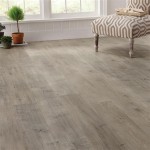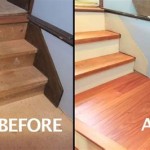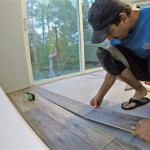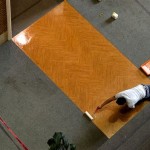Gray Spots on Hardwood Floor After Cleaning: Causes and Solutions
The appearance of gray spots on hardwood floors following a cleaning session is a frustrating issue for many homeowners. These blemishes can diminish the aesthetic appeal of the floor and raise concerns about potential damage to the wood. Understanding the underlying causes of these gray spots is crucial for effective prevention and remediation. This article will explore the common factors contributing to this problem and provide guidance on addressing them.
Excessive Moisture Exposure
One of the primary culprits behind gray spots on hardwood floors after cleaning is overexposure to moisture. Hardwood, being a natural material, is inherently porous and susceptible to absorbing water. When excessive liquid is applied during cleaning, the moisture can penetrate the finish and seep into the wood fibers. This absorbed water can react with tannins within the wood or with existing contaminants, leading to discoloration and the formation of gray spots.
The type of cleaning method employed also plays a significant role. Wet mopping, for instance, often introduces a substantial amount of water to the floor surface. If the excess water isn't promptly and thoroughly removed, it increases the risk of moisture absorption. Similarly, using a steam mop improperly—that is, holding it in one spot for too long or using it on floors not specifically designed for steam cleaning—can lead to moisture-related issues.
Furthermore, the condition of the floor's finish is critical. A compromised finish, characterized by scratches, cracks, or wear, provides pathways for moisture to infiltrate the wood more easily. Even seemingly minor imperfections can act as entry points, leading to localized discoloration under the finish. Therefore, maintaining a sound and intact finish is essential for preventing moisture-related gray spots.
The type of wood itself contributes to the risk. Some wood species are more absorbent than others. For example, softer hardwoods like pine are more prone to moisture absorption compared to denser hardwoods like oak or maple. Knowing the type of wood flooring in a home is essential for choosing appropriate cleaning methods and products.
Environmental factors, such as high humidity, can exacerbate the problem. In humid climates, the air itself contains a greater amount of moisture, which can slow down the drying process after cleaning. This extended exposure to moisture increases the likelihood of water penetrating the wood and causing discoloration.
Addressing excessive moisture exposure requires a two-pronged approach: prevention and remediation. Preventive measures include using minimal water during cleaning, employing dry mopping techniques with microfiber cloths, and ensuring the floor's finish is well-maintained. If gray spots have already appeared, immediate action is necessary to dry the affected area thoroughly. This might involve using a dehumidifier to lower the ambient humidity or employing a fan to promote air circulation over the floor surface.
Reaction with Cleaning Products
The chemical composition of cleaning products can also contribute to the development of gray spots on hardwood floors. Certain cleaning agents contain ingredients that react adversely with the floor's finish or the wood itself, resulting in discoloration. It is imperative to select cleaning products specifically formulated for hardwood floors and to adhere strictly to the manufacturer's instructions regarding dilution and application.
Ammonia-based cleaners, for example, are generally not recommended for hardwood floors. Ammonia can strip away the finish, leaving the wood vulnerable to damage and discoloration. Similarly, harsh chemical solvents or abrasive cleaners can scratch or dull the finish, leading to a cloudy or gray appearance. The pH level of cleaning products is also an important consideration; highly acidic or alkaline cleaners can etch or damage the wood.
Residue left behind by cleaning products can also contribute to discoloration. Some products, particularly those that aren't properly diluted or rinsed, can leave a film on the floor's surface. This film can attract dirt and grime, leading to a dull or gray appearance over time.
The interaction between different cleaning products can also be problematic. Mixing cleaning agents, especially those containing bleach or ammonia, can create harmful chemical reactions that damage the floor's finish. It is essential to use only one cleaning product at a time and to thoroughly rinse the floor with clean water after cleaning.
To mitigate the risk of cleaning product-related gray spots, it is recommended to test any new cleaning product on an inconspicuous area of the floor before applying it to the entire surface. This allows for observation of any adverse reactions or discoloration without affecting the overall appearance of the floor. It's also crucial to read the label carefully and ensure the product is compatible with the specific type of hardwood flooring.
The use of natural cleaning solutions, such as a mixture of water and vinegar, is often promoted as a safe alternative to commercial products. However, even natural solutions should be used with caution. Vinegar, being mildly acidic, can potentially damage certain types of finishes over time. It is essential to dilute vinegar properly and to rinse the floor thoroughly with clean water after cleaning.
Embedded Dirt and Grime
The accumulation of embedded dirt and grime within the floor's finish or even the wood pores themselves can manifest as gray spots after cleaning. Over time, microscopic particles of dirt, dust, and debris can become trapped within the finish, particularly in areas with heavy foot traffic or where spills have occurred. When the floor is cleaned, these embedded particles may become more visible, resulting in localized discoloration.
The type of flooring finish plays a crucial role in how readily dirt becomes embedded. Finishes with a matte or satin sheen tend to hide dirt better than high-gloss finishes. However, these less reflective finishes can also be more porous, allowing dirt to penetrate more easily. Older finishes, which may have developed micro-cracks or wear, are also more susceptible to trapping dirt.
Insufficient or improper cleaning techniques can exacerbate the problem of embedded dirt. Using a dirty mop or cloth, for instance, can simply redistribute dirt across the floor surface instead of removing it. Similarly, failing to vacuum or sweep regularly can allow dirt to accumulate over time, making it more difficult to remove during cleaning.
Certain types of dirt are more likely to cause discoloration. For example, oily or greasy substances can penetrate the finish and leave behind a residue that attracts more dirt. Pet dander and hair can also contribute to the problem, as they often contain oils and allergens that can stain or discolor the floor over time.
Addressing embedded dirt requires a combination of regular maintenance and thorough cleaning. Regular vacuuming or sweeping is essential for removing loose dirt and debris before it becomes embedded. When mopping, it is important to use a clean mop head and to rinse it frequently to prevent the redistribution of dirt. Deep cleaning with a specialized hardwood floor cleaner may be necessary to remove stubborn dirt and grime that have become deeply embedded.
In cases where embedded dirt has caused significant discoloration, refinishing the floor may be the only effective solution. Refinishing involves sanding down the existing finish and applying a new coat, which removes the embedded dirt and restores the floor's original appearance. However, refinishing is a more involved process that should be performed by a professional.
Prevention is key when it comes to embedded dirt. Using doormats at entrances can help to trap dirt and debris before they are tracked onto the floor. Removing shoes before entering the house can also significantly reduce the amount of dirt that accumulates on the floor. Regular sweeping and vacuuming, combined with occasional deep cleaning, can help to keep hardwood floors looking their best and prevent the formation of gray spots caused by embedded dirt.

Post Renovation Floor Cleaning Made Easy What You Need To Know Deep Formaldehyde Removal Specialist Vinyl Guards

Steam Cleaning A Wood Floor Recipe For Disaster Rosebud Floors

Hardwood Floor Repair In Portland Or

How To Fix Gray Spots On Hardwood Floors Countyoffice Org

Cleaning Laminate Which Has Some White Patch Hometalk

What Would You Tell Her Tiktok K L E A N Dirty Hardwood Wood Floor Question Tips

How To Clean Mysterious White Marks From Laminate Flooring Hometalk

Can I Save This Wood Floor The Hardwood Flooring Experts Petes Floors

How To Clean Mysterious White Marks From Laminate Flooring Hometalk

Hardwood Floor Cleaning Restoration Services Rhode Island Aeroclear Usa
Related Posts








